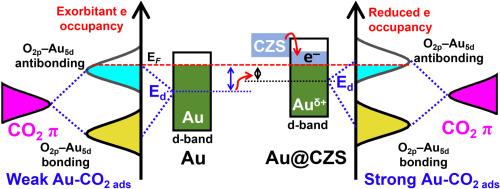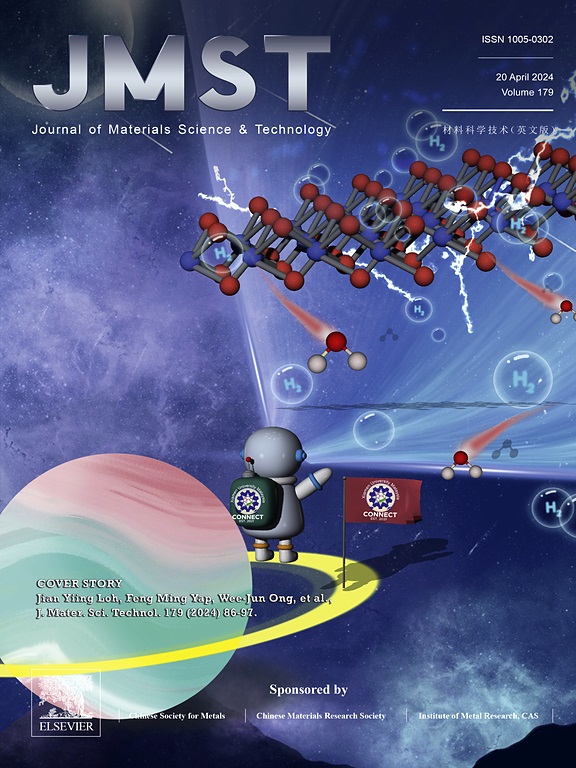Enhancing CO2 photoreduction on Au@CdZnS@MnO2 hollow nanospheres via electron configuration modulation
IF 11.2
1区 材料科学
Q1 MATERIALS SCIENCE, MULTIDISCIPLINARY
引用次数: 0
Abstract
Recently, the noble metal Au has been widely applied as the cocatalyst for improving the photocatalytic reduction of CO2. However, the metallic Au exhibits weak adsorption strength towards CO2 due to its intrinsic electronic structure with d-orbitals fully filled, thus limiting the activation and reduction of CO2. To address this issue and maximize the photoreduction of CO2, herein we have designed Au@CZS@MO-400 triple-shelled hollow nanospheres by depositing Cd0.7Zn0.3S (CZS) on the outer surface of the MO-400 (MnO2 annealed at 400°C) hollow nanospheres and then Au nanoparticles on the CZS surface. It is manifested that the resultant 3%Au@CZS@MO-400 achieves a remarkably boosted photoreduction of CO2 with the CO/CH4 yield rates as high as 68.25/12.42 μmol g-1 h-1, increased by 3.7/1.5 times over MO-400 and 12.9/1.5 times over CZS. The combined analyses from X-ray photoelectron spectroscopy and density functional theory calculations confirm the creation of electron-deficient Auδ+ active sites by modulating their electron configuration by CZS, consequently decreasing the CO2‒Au antibonding-orbital occupancy to reinforce the adsorption strength of CO2 onto the Au active sites and in turn boost the photoreduction of CO2. Moreover, it is demonstrated that the Au@CZS@MO-400 hollow nanospheres are quite efficient for supplying the Au cocatalyst with photoelectrons for CO2 reduction reactions due to the good energy band matching, unique hollow structure and high electron spin polarization of MO-400. This work provides important guidance for understanding and modifying photocatalysts to maximize their photoreduction of CO2.

通过电子构型调制增强 Au@CdZnS@MnO2 空心纳米球上的二氧化碳光生化能力
本文章由计算机程序翻译,如有差异,请以英文原文为准。
求助全文
约1分钟内获得全文
求助全文
来源期刊

Journal of Materials Science & Technology
工程技术-材料科学:综合
CiteScore
20.00
自引率
11.00%
发文量
995
审稿时长
13 days
期刊介绍:
Journal of Materials Science & Technology strives to promote global collaboration in the field of materials science and technology. It primarily publishes original research papers, invited review articles, letters, research notes, and summaries of scientific achievements. The journal covers a wide range of materials science and technology topics, including metallic materials, inorganic nonmetallic materials, and composite materials.
 求助内容:
求助内容: 应助结果提醒方式:
应助结果提醒方式:


